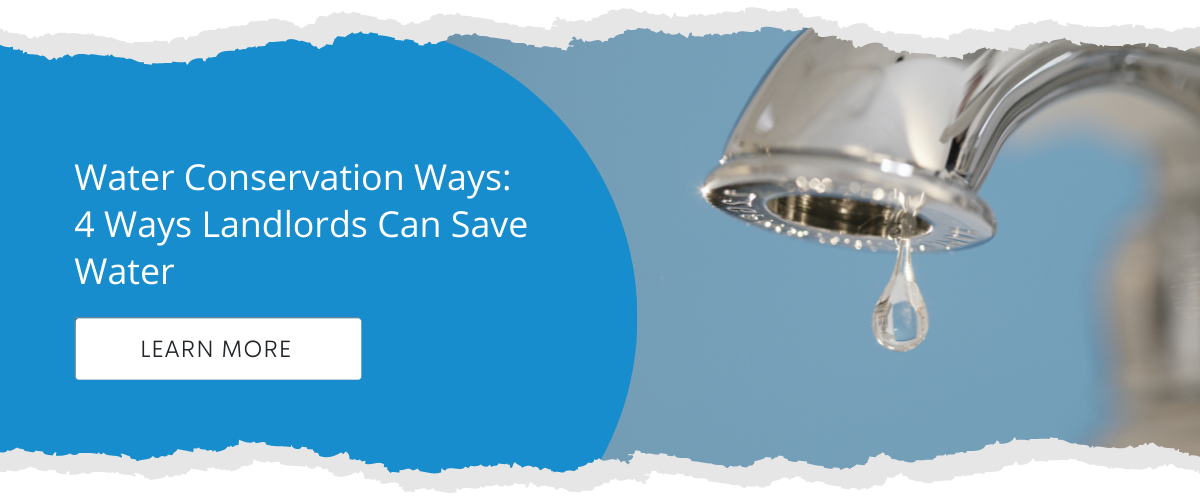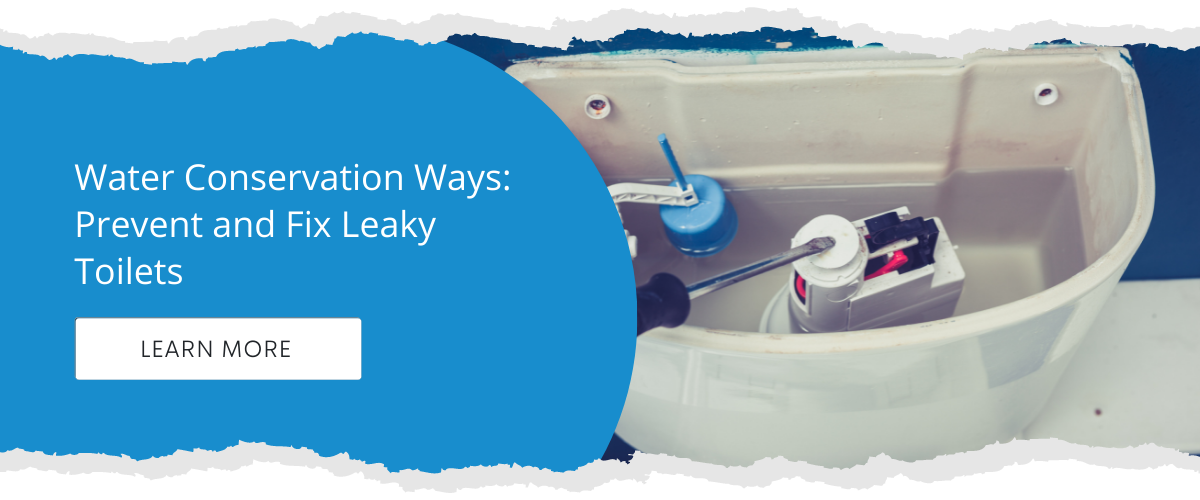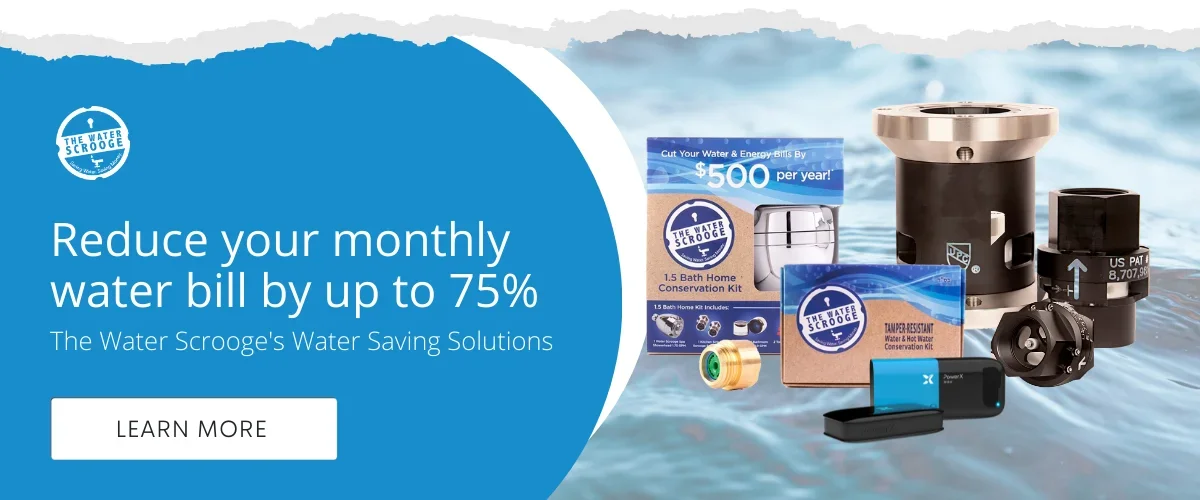4 min read
The Best Ways to Conserve Water in Large Residential Buildings
![]() David Schwartz
Feb 17, 2020 9:30:00 AM
David Schwartz
Feb 17, 2020 9:30:00 AM

The idea that we should conserve water has been around for enough generations that it’s been internalized by almost all of us, even those living in areas where there is no apparent water shortage. That’s one of the advantages of a global economy—everyone has become aware of the various survival needs of the entire planet.
In larger residential buildings, property owners and building managers have much to gain from a policy of limited water use. Obviously, consuming less water means spending less on water and energy to heat that water, which can add up considerably over the course of a fiscal year.
Water Conservation in Residential Buildings
How can you reduce your building’s water use? Let’s take a look at six key ways to achieve significant increases in water efficiency.
01. Insulated Pipes and Tanks
If you’ve ever stood in the kitchen or bathroom while you let the water run until it gets hot enough to shower, wash the dishes, or wash your hands, you know how much water can be lost simply because of the temperature outside.
The solution is to insulate all pipes and storage tanks. As a result, even when temperatures turn frigid, the water is kept warm enough that depending on what you’re doing, your property’s residents can either use it right away or a lot sooner than they would be able to without the insulation. Moreover, insulating the piping means that less energy is required to heat the water to begin with—another win.
Insulting pipes and storage tanks is an energy code requirement in most municipalities now, for exactly this reason: When hot water is ready on demand, we’re less likely to waste water or energy. But in most older buildings, insulating all plumbing retroactively is virtually impossible. For these properties, controlling water flow makes much more sense, costs less than a major construction project, and brings a higher ROI.
02. Regulated Shower Fixtures
Beyond the time your building’s residents take in the shower, how much water actually flows from their showerheads per minute can make a real difference towards water conservation.
Here are some figures to illustrate the point:
The average American showers for 8.2 minutes and uses 17.2 gallons of water at an average flow rate of 2.1 gallons per minute (gpm). Multiply 17.2 gallons by 100 residents, and you’re looking at 1720 gallons of water per day. Of course, everyone’s showering habits differ, but you can see how easily these numbers at up, especially if the building houses closer to 1000 tenants.
03. Shower Water Saving Tips
A low-flow shower regulator reduces the amount of water that flows from the shower head each minute. There are plenty of inexpensive flow regulators available for purchase, but most involve major compromises to the showering experience, prompting tenants to manually remove them.
The Water Scrooge, on the other hand, allows landlords to choose a flow rate that can reduce water usage without sacrificing tenant comfort. In some cases, a regulated shower flow, coupled with our spa shower heads, can actually improve the way a shower feels.
Unlike most shower regulators, our products are tamper-proof, meaning a tenant cannot remove them or adjust their flow rates whenever they choose. This is an essential feature that protects a landlord's investment in the technology.
04. Greywater and Rainwater Collection
For a more significant investment, reclaiming gray water and collecting rainwater can be another effective means of water conservation.
Gray water is water that has already been used, but for non-toxic purposes—meaning, the water that goes down the drain from the laundry and showers, for example. This water heads for the drains and is essentially lost, unless it is captured, as it were, for reuse. It should go without saying that the reclaiming process involves treating gray water to filter and disinfect it. After treatment, this non-potable water can be used for toilet flushing, irrigation systems, cooling towers, cleaning processes, and the like.
Because of the costs associated with gray water systems, its potential for water conservation lies with large residential buildings, hotels, and commercial complexes where there is high demand for water that does not have to be potable. The installation of gray water systems, however, requires modifications that may make it an impossible choice for most older buildings. On the other hand, new construction projects can implement a greywater system during the design of a building.
Similarly, rainwater collection entails significant upfront spending in order to benefit from the returns. It is also contingent on having a large catchment area, like a building roof, and significant rainfall. The resulting treated rainwater is likewise best used where potable water is not required.
Rainwater collection is illegal in some states, but fortunately, in New York it is legal and even encouraged.
05. Pressure Reducing Valves
Taller buildings may experience a loss of water pressure both because of their height and because of the number of units and fixtures drawing on the building’s water supply.
For that reason, as soon as we start talking about large residential buildings, we need to consider the possibility that booster pumps have been installed to maintain the water supply in the building’s distributed tanks. Moreover, whenever booster pumps are present, water flows from the tap with increased volume, which is the point of a system like this. But much of the increased flow ends up translating to waste, as the volume exceeds the amounts needed for regular use. See here for the Smart Valve™.
Pressure-reducing valves should therefore be installed and are often mandated by plumbing code, especially to prevent the higher pressure from rupturing valves or pipes—which, of course, means even more unnecessary water loss.
06. Control Toilet Flushing
Toilets are usually overlooked as conservation often focuses on faucets and showerheads, but toilets can contribute to significant water consumption with every single flush.
According to the EPA, toilet flushes account for 31% of overall household consumption. And while you can’t ask tenants to reduce their toilet use, you can control how much water the toilet uses. Toilets made before 1980 use 5 gallons of water per flush, while newer toilets use only 1.6 gallons or less.Installing new toilets can save water, but even with new toilets, the flush rate isn't necessarily guaranteed—old flappers and leaks can still cause wastage.
The Water Scrooge offers toilet inspections and products that can calibrate the flow rate of your toilets to make sure they’re not wasting water on every flush. We also check for leaks and aging parts that can impact water savings.
Check out our Toilet Scrooge FAQ!
Counting Every Drop
Resources are limited and water supplies are being squandered even as we speak. Do all you can to conserve water and feel good about the contribution you are making to your business and the planet at large.
About The Water Scrooge™
The Water Scrooge™ offers water conservation ways and products to multi-family landlords and homeowners, including: shower flow controllers, Leak Detection Systems, Toilet Leak Prevention Devices (The Toilet Scrooge™), water flow management devices (SMART Valve™), toilet calibration and DIY products.
Also featuring The Water Scrooge™ App. Our app empowers your team to carry out the installation of our kits. With it, you can also record and track data points about the units (other than water usage).






